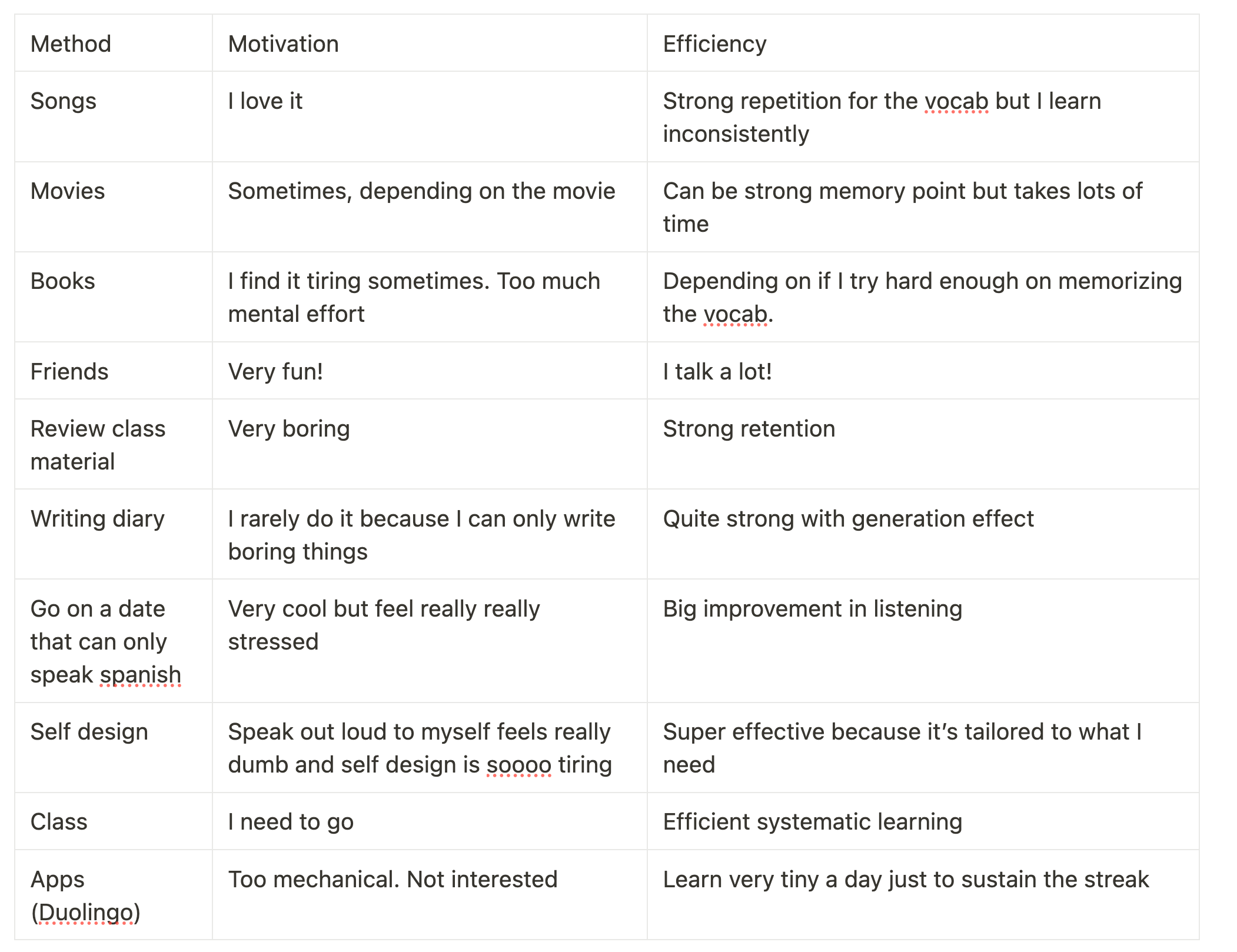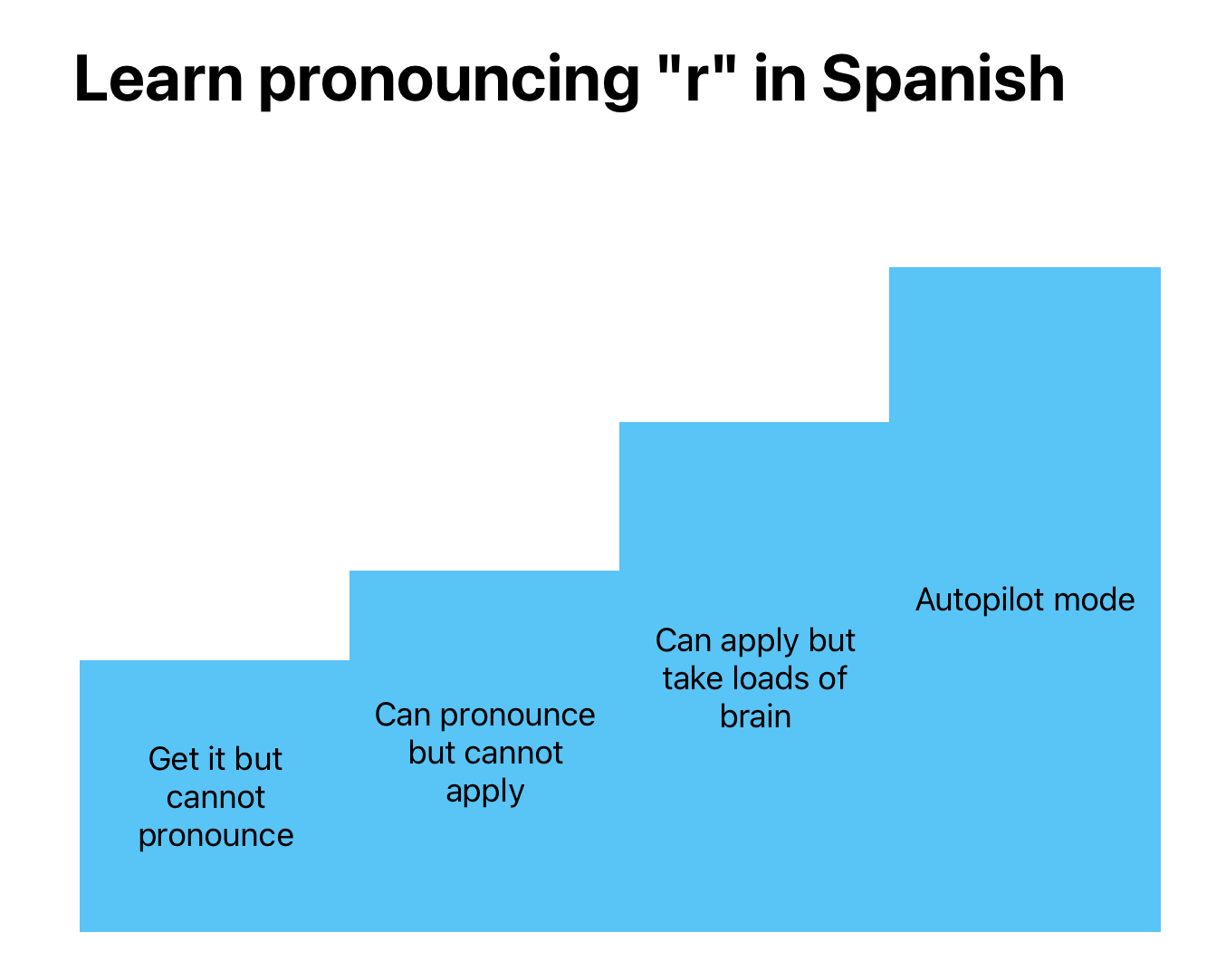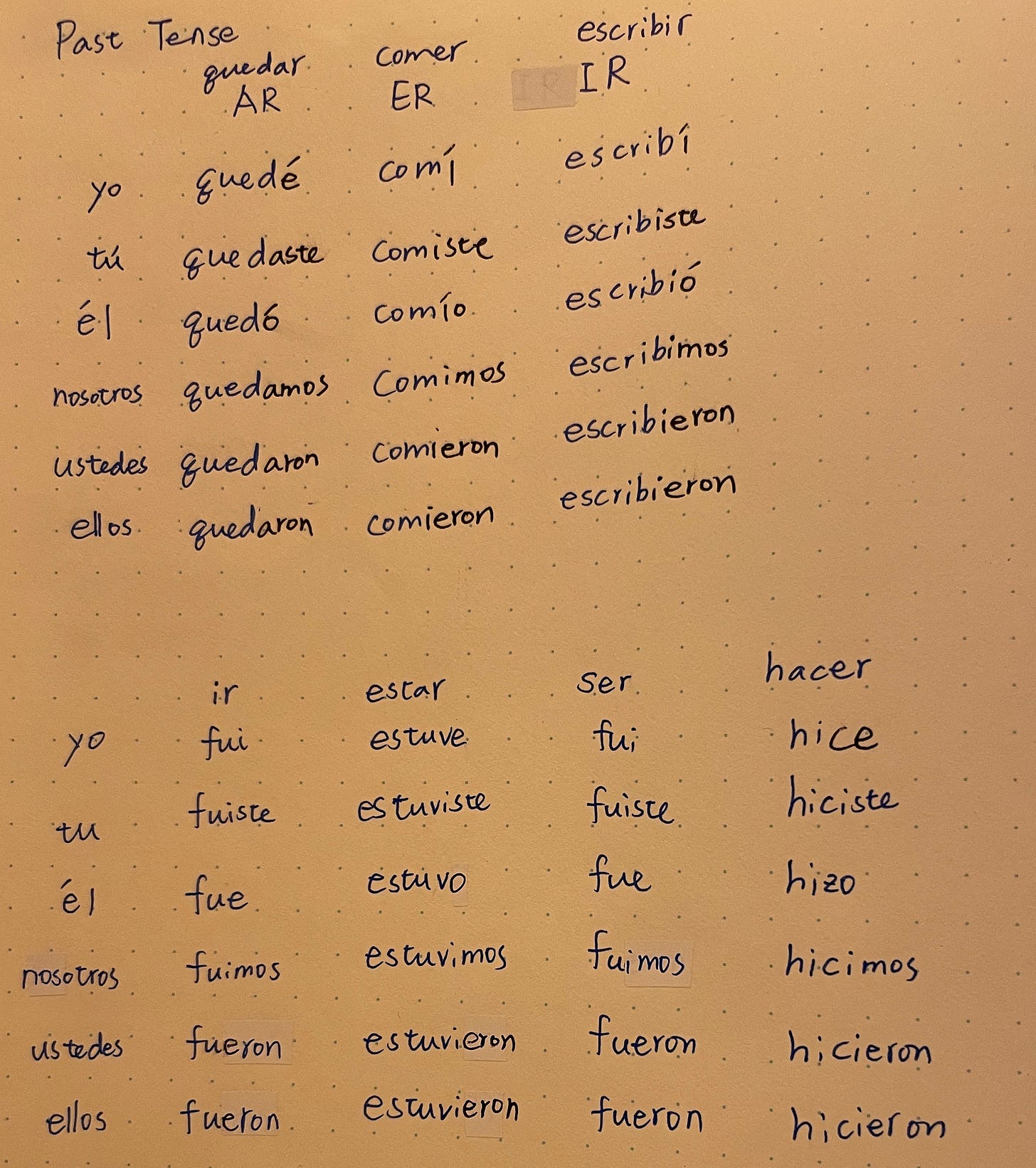To learn effectively, people like to learn language in a painful way like going to a stressful cram school. It usually comes from two reasons: intense practice + strong external motivation. As a self-learner, I wonder if I reach language learning with efficiency while minimizing my motivational mental barrier.
I’ve tried many methods, and these are how different methods play out for me.
Today, after learning past tense in Spanish so many times, I decided to rethink my learning again with my friend. Well…we have this discussion in Spanish, but let me translate and summarise my takeaway in English for you. There are two common bottlenecks I face when learning to speak Spanish.
Bottleneck 1: It takes me millions of years to think
First, we can roughly break down the process of language learning into 4 steps.
Get it but cannot pronounce it: I can hear the “r” but cannot pronounce it.
Can pronounce but cannot apply: I can pronounce “r” independently but cannot combine this in a word.
Can apply but take loads of brain: I can pronounce a word with “r” but I need to try 10 times and think really hard.
Autopilot mode: I can pronounce a word with “r” easily without thinking hard.
A similar idea also applies to my learning grammar. For instance, this is not the first time I practiced past tense in Spanish but whenever I need to apply it in a real conversation, it takes me a million years to think it through.
This is the most common bottleneck I have in learning to speak a language. Applying is usually a bigger challenge the absorbing. I know a lot because I go to classes and learn all the rules., but I’m often stuck at the most basic level because I don’t have a good environment to isolate my practice on a specific dimension (e.g. past tense) that will take me a million years to think.
Bottleneck 2: I rarely stretch during an unintentional immersive practice.
My initial solution is just to take to natives and friends more, but that doesn’t help. Why?
Even though I have a weekly Spanish practice with my friend, people rarely use the vocabulary they know but are unfamiliar with applying it. It’s not fully registered in our brains. For instance, look at what I learned in class today.
I notice that in my conversation with my friend, I frequently use vivir(live), viajar(travel), but rarely use tomar(take), simpatica(nice) even though they are also in my vocabulary. If I can potentially exercise things that are already there, I am probably at a basic conversational level.
That’s a similar reason why I’m completely fluent in front of an Argentinian taxi driver, but I can barely hold a 5-minute conversation with a native speaker. Because with taxi drivers, all the conversations are similar. “Where are you from? Why are you here? Do you like Argentina…” I repeatedly practice things I know really well, so I never improve.
Hence, the real question becomes: How do I design a solution that I can stretch myself in and practice unfamiliar concepts out of the classroom?
Solution Ideation
First, my friend and I decided to create a list of words that we know but never apply, and decided to apply them intentionally during our practice session.
The second idea I’m pondering is if AI can create a structure and a better environment for me for deliberate practice. The best part of using a robot is to create output in a structually way, so it will not flow randomly like a natural human conversation. Does AI have the potential to design that stretch without me forcing myself to motivate it?
Now, ChatGPT is already able to hear and talk, meaning that if I can tweak it a little bit, I might be able to create a potential solution in a way that demands me to stretch the most. For instance, I know that asking me what I did yesterday with a list of unused words I know is a good way for me to stretch (practice past tense + new vocabulary).
However, I do not want to have a solution that I will need to tell AI to “generate 5 questions about the past using this list of words.” as a user because this big mental effort will soon kill my motivation too. I want something that I can easily customize while almost looking like a self-design curriculum. Is there any way I can do it?







I am wondering if there is a need to give a list to AI at all. Wouldn't clicks like:
User onboard:
1. choose yr level
2. choose the topics u love (tags)
3. choose the grammar u know (tags and multiselect)
And then one-off convo experience:
1. do u wanna practice a certain topic? <topic>
2. do u wanna practice certain grammar? <grammar>
While keep a dynamic db of:
- words_learned so far (=words used by a user). each word has a proficiency score from 0-1 in the db to make querying for AI easier.
- grammars practice. also each grammar topic has a proficiency score.
AI prompts:
- "in the convo with me, a user, pls prompt me to use <grammar> and talk about <topic>. the goal is to master proficiency of all words_learned in <topic> to 1.